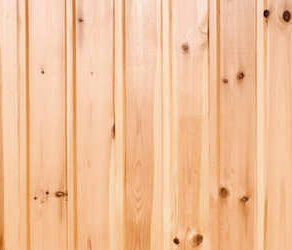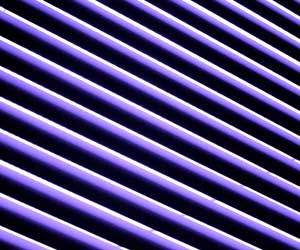Table of Contents:
Question: “How can I clean hard water spots from soft plastic window coverings or plastic windows.”
Hard water stains are caused by the deposits of calcium and magnesium that are left on a surface. They are particularly easy to see on plastic windows since they create a cloudy film over the clear plastic. Though they can be a nuisance to remove, the process is quite simple.
water stains are caused by the deposits of calcium and magnesium that are left on a surface. They are particularly easy to see on plastic windows since they create a cloudy film over the clear plastic. Though they can be a nuisance to remove, the process is quite simple.
You Will Need:
- Spray bottle
- Soft cloth
- White vinegar
- Water
- Soft-bristled scrub brush
- Enzyme digester
- A lemon
The Removal Process:
- Begin by cleaning the area as normal to remove any dirt and dust.
- If possible, remove upright plastic pieces and lay them as flat as possible.
- Combine white vinegar and water, in equal parts, in the spray bottle.
- Spray the stained area and allow it to soak for at least 15 minutes. If the piece is not laying flat, you can place a cloth that has been moistened with the solution on top of the stain (or tie it around the area)
- For stubborn stains, allow the solution to soak for several hours to overnight. In areas with heavy levels of staining, use undiluted vinegar in place of the solution.
- Remove the cloth and gently scrub away any remaining stains with a soft-bristled scrub brush.
- Repeat as necessary.
- If the vinegar does not remove the deposits, try using an enzyme digester. Nature’s Miracle Hard Floor Cleaner is one that is specifically made for hard surfaces like plastic, but any enzyme cleaner should work. Follow the directions on the label of your selected cleaner.
- Another option is to cut a slice of lemon and rub the lemon over the deposits. Scrub the deposits with a scrub brush, then rinse the area clean.
Additional Tips and Advice
- If your plastic food containers are stained, simply soak the entire container in the vinegar solution for at least 15 minutes (or as long as overnight for tougher stains). Wash as normal before use.
- There are commercial limescale cleaners that you can buy at most supermarkets and online, such as Simple Green Limescale Remover.
- Consider getting a water softener for your home to prevent this problem from returning.
- Wiping a surface dry after cleaning it will prevent the minerals from being deposited onto the surface.
Sources
- Stain Removal by Stephanie Zia
- The Miracle of Lemons by Dr. Penny Standway









How can I get the above stain off without scratching an otherwise beautiful white refrigerator? Thanks much!
Use rubbing alcohol on your white refrigerator. It is amazing! I also use it to clean where my son colors on the walls with his markers. I also got Sharpie out of our yellow sofa with rubbing alcohol. Pour it on and blot! Doesn’t leave a ring or anything! It’s magic!
I have the same question; how to remove the white stain from the plastic water/ice-maker shelf on the outside of the refrigerator?? I have tried vinegar soaking and soaking in Coca Cola for long periods of time. Not together; separately. Neither works.
This worked beautifully on a black plastic piece that was in the sun and on a glass bird bath. Thank you for sharing. White vinegar, who knew?!
I tried the water/vinegar solution on my green house panels to remove the hard water stains, but it did not work! Now what?
Star,
The guide has been updated to include a few more cleaning options: an enzyme digester, a lemon, or even a commercial limescale remover if needed.
I have tried vinegar and lime remover…does not work; it is like the hard water soaked into the plastic. It will not go away and it looks awful.
How to remove hard water stains on a pool ladder
Hi Link,
Remove the ladder from the pool, then the same methods as here can be used either by soaking the ladder in a bathtub or by applying the cleaner of your choice (vinegar, lemon juice, etc.) directly onto the ladder and using paper towels to keep the area wet long enough for it to dissolve the hard water. It’s important that these methods not be used while the ladder is still in the pool as the mixture of acids (such as vinegar or lemon, which are needed to dissolve the lime) should never be mixed with chlorine bleach (pool water). If you have to clean the ladder while it’s still in the pool, it’s imperative that you wait until at least several days after you have added the bleach for it to be completely degraded. Good luck!
Source: The Spruce – What’s the Best Way to Clean Tile at the Swimming Pool Waterline?
Hi Link,
Remove the ladder from the pool, then the same methods as here can be used either by soaking the ladder in a bathtub or by applying the cleaner of your choice (vinegar, lemon juice, etc.) directly onto the ladder and using paper towels to keep the area wet long enough for it to dissolve the hard water. It’s important that these methods not be used while the ladder is still in the pool as the mixture of acids (such as vinegar or lemon, which are needed to dissolve the lime) should never be mixed with chlorine bleach (pool water). If you have to clean the ladder while it’s still in the pool, it’s imperative that you wait until at least several days after you have added the bleach for it to be completely degraded. Good luck!
Source: The Spruce – What’s the Best Way to Clean Tile at the Swimming Pool Waterline?